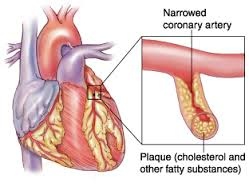 Do you really know what you are eating? Avoiding processed foods will also avoid dangerous ‘fake’ fats.
Do you really know what you are eating? Avoiding processed foods will also avoid dangerous ‘fake’ fats.
Cardiovascular disease is still the leading cause of death worldwide and while mainstream medicine and naturopathic practitioners often do not agree on the causes and risk factors, the introduction of trans fats has created a universal cause for concern.
Trans fats (also known as partially hydrogenated vegetable oil) were developed for use in the manufacture of spreads, and bakery and confectionary products over concerns that saturated fats were contributing to heart disease statistics. The idea was that the food industry wanted an ingredient that was shelf-stable, had a high fat content and could replicate the physical properties of a high melting point saturated fat.1
As concerns grew that trans fats were themselves a cause of heart disease, the food manufacturing industry started looking for alternatives. What emerged were interesterified fats (IE) as they could improve a product’s melting point, texture and shelf stability. 1
Some basic biochemistry may be required at this point. Dietary fats consist of triacylglycerols (TAG), composed of three fatty acids esterified to a glycerol backbone. Interesterification, chemically or enzymatically, swaps or rearranges fatty acids within a TAG or between TAGs. 1 This process produces a different structural species that reduces the saturated fatty acid by 10%. As a result, this positional change may affect fat metabolism and digestibility.
And this is the question, what do we know about IE? Are they better or worse for our health than trans fats? There is very little research that can answer this question but preliminary studies show the news is not good.
As with trans fats, there is no compulsory requirement for food manufacturers to disclose their use of IE on the label, so there is no way of knowing just how much we are consuming in Australia. Figures from the United States show that there IE account for around 3% of energy intake if they are the sole replacement for trans fats.1
There are few, if any, studies conducted on humans but there is evidence from a recent study in mice that IE fats containing palmitic acid induced the development of atherosclerosis by promoting the accumulation of cholesterol in low density lipoproteins (LDL) and macrophages, stimulating inflammation.2
Mice in the study were fed a high-fat diet (40%) containing polyunsaturated fat, trans fatty acids, palmitic acid, palmitic IE, stearic acid, or stearic IE. Major findings were that the process of interesterification did not increase plasma lipid concentrations. However, diets containing palmitic IE resulted in a similar cholesterol deposition in LDL particles as trans fats, a similar inflammatory response and collagen deposition, or greater atherosclerotic lesion.2
Both palm IE and trans showed the same ability to transport cholesterol to peripheral tissues, leading to intracellular cholesterol accumulation and the activation of inflammatory signalling pathways. 2
There, of course, must now be more studies to verify the mechanism and the results in humans, but as with excipients, and additives and preservatives in foods the change in attitude is crucial. That is, for the food industry not to treat these changes in food structure as harmless until the research has proven it.
References:
- Mills CE, Hall WL, Berry SEE. What are interesterified fats and should we be worried about them in our diet? Nutr Bull. 2017;42(2):153-158. doi:10.1111/nbu.12264.
- Silva M, Silvia M, Lavrador F, et al. ScienceDirect Dietary interesterified fat enriched with palmitic acid induces atherosclerosis by impairing macrophage cholesterol efflux and eliciting inflammation ☆. 2016;32:91-100.
Source: Henry Osiecki Education Centre
